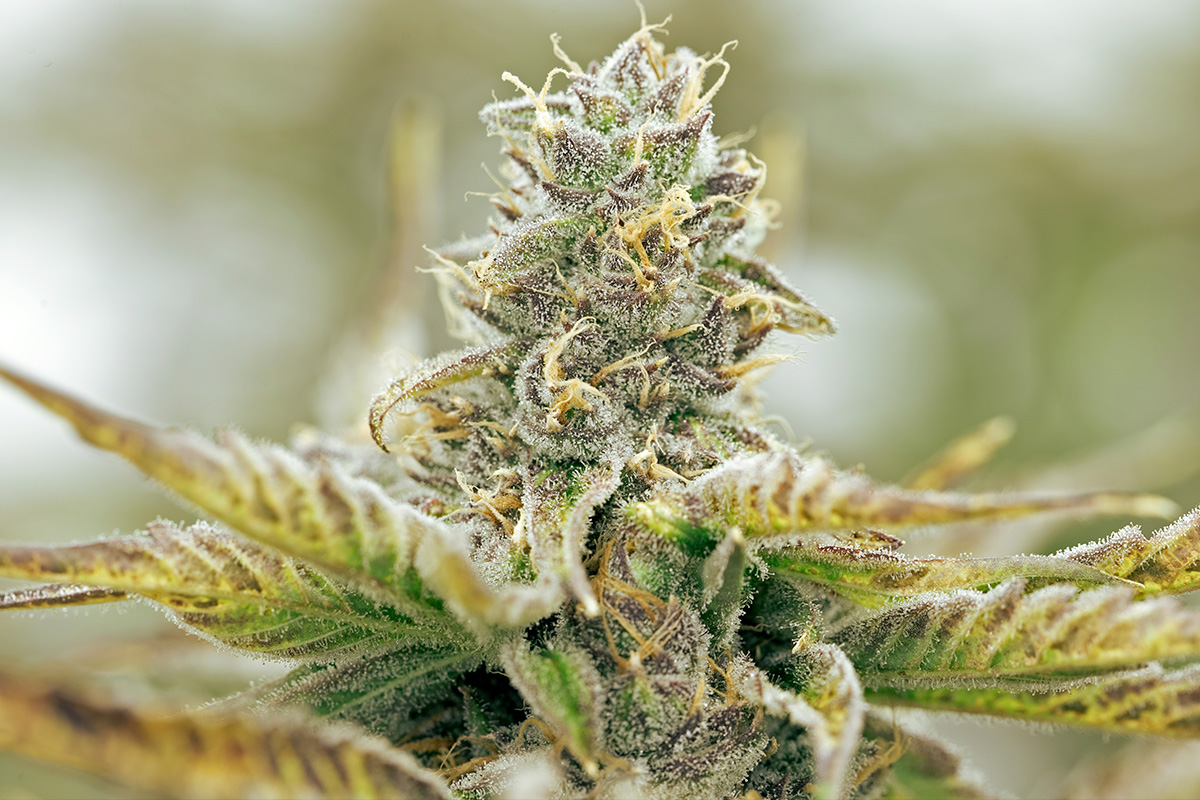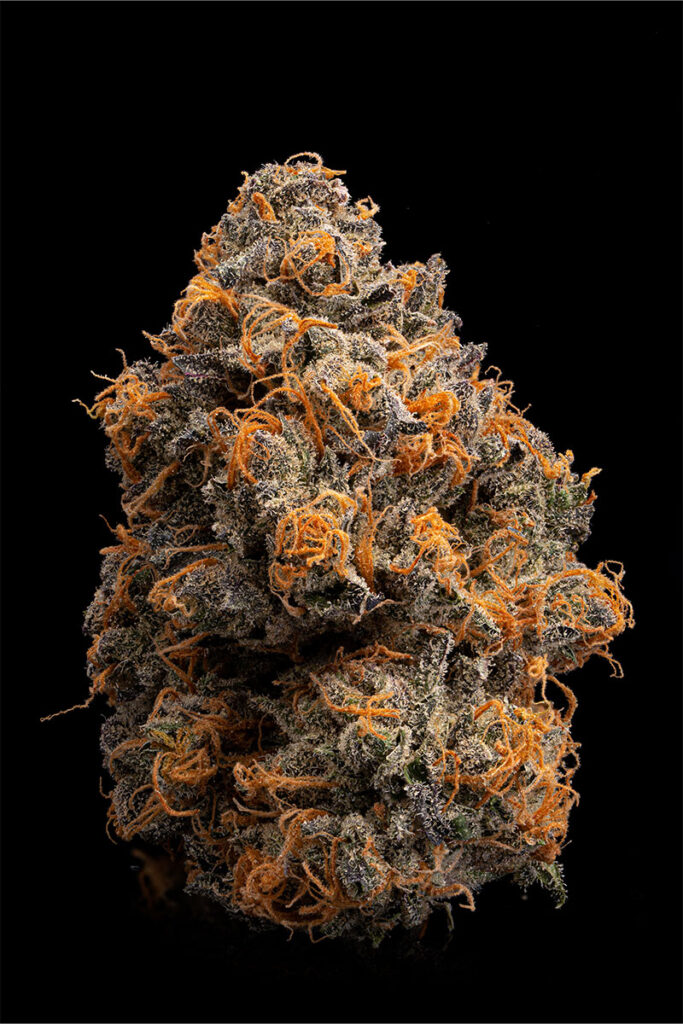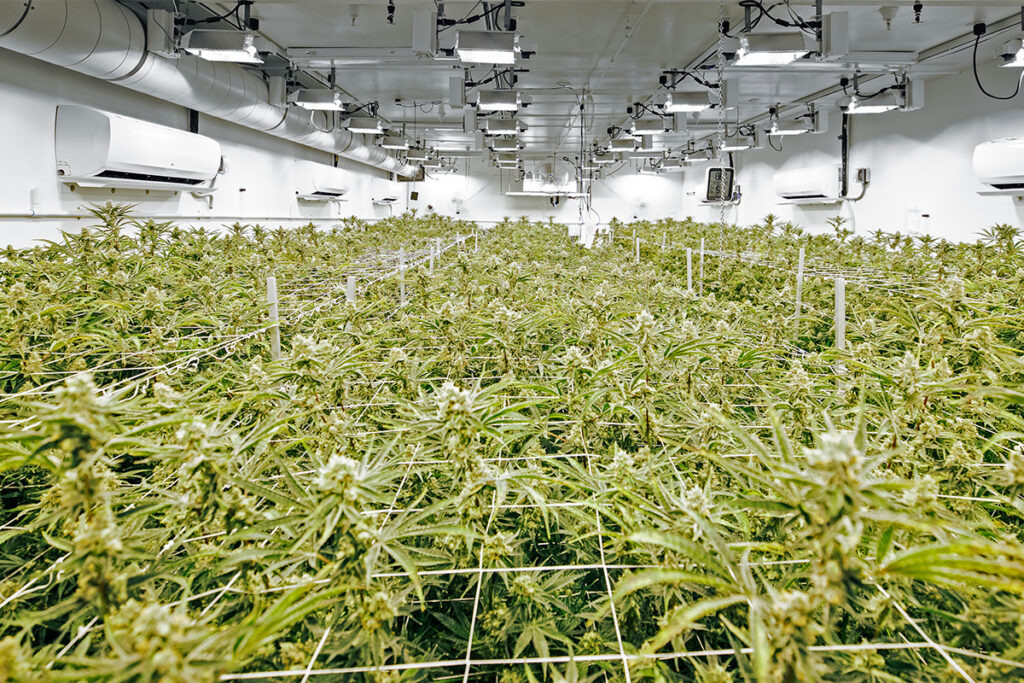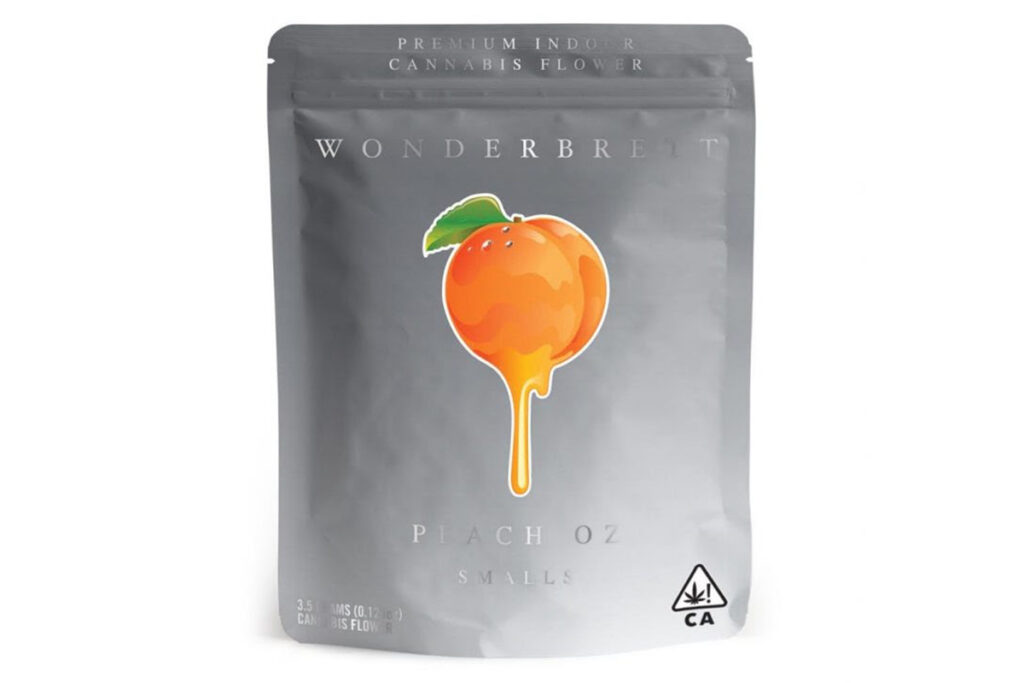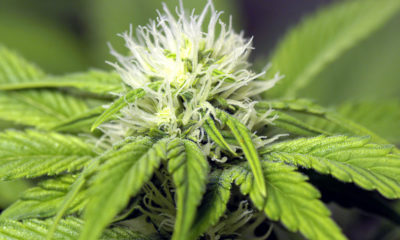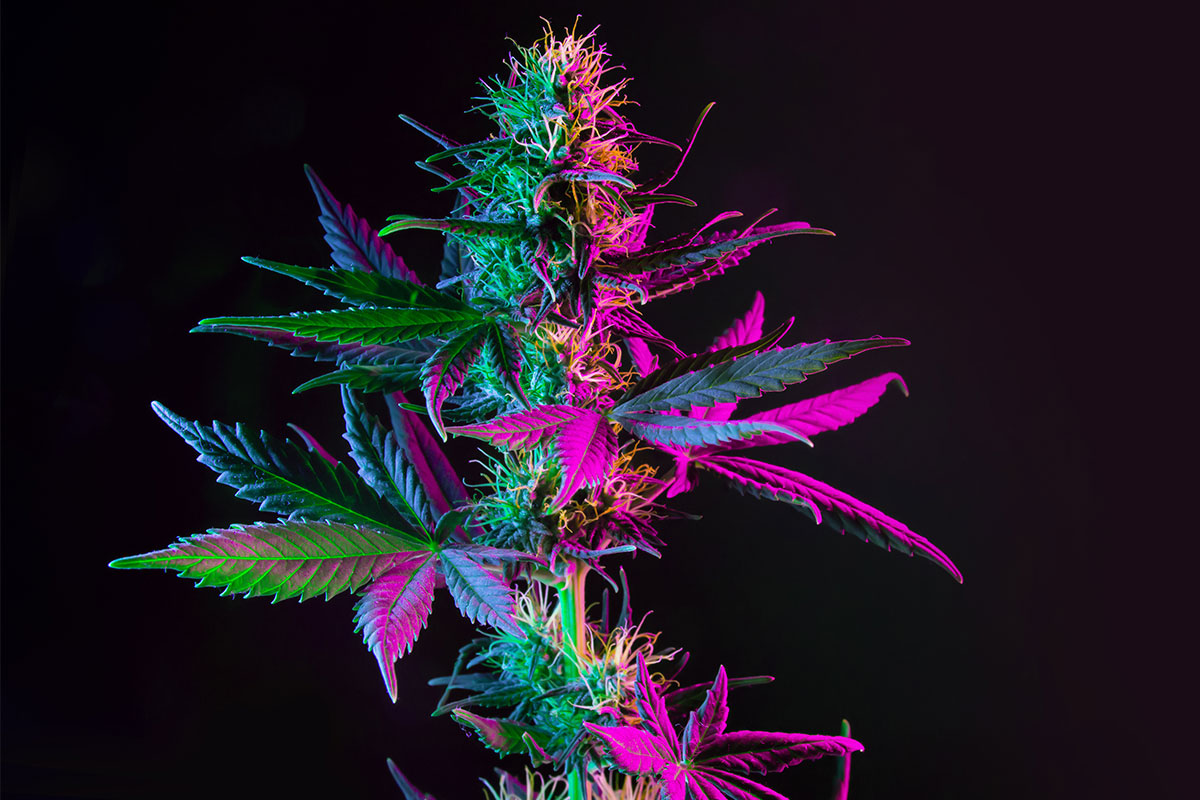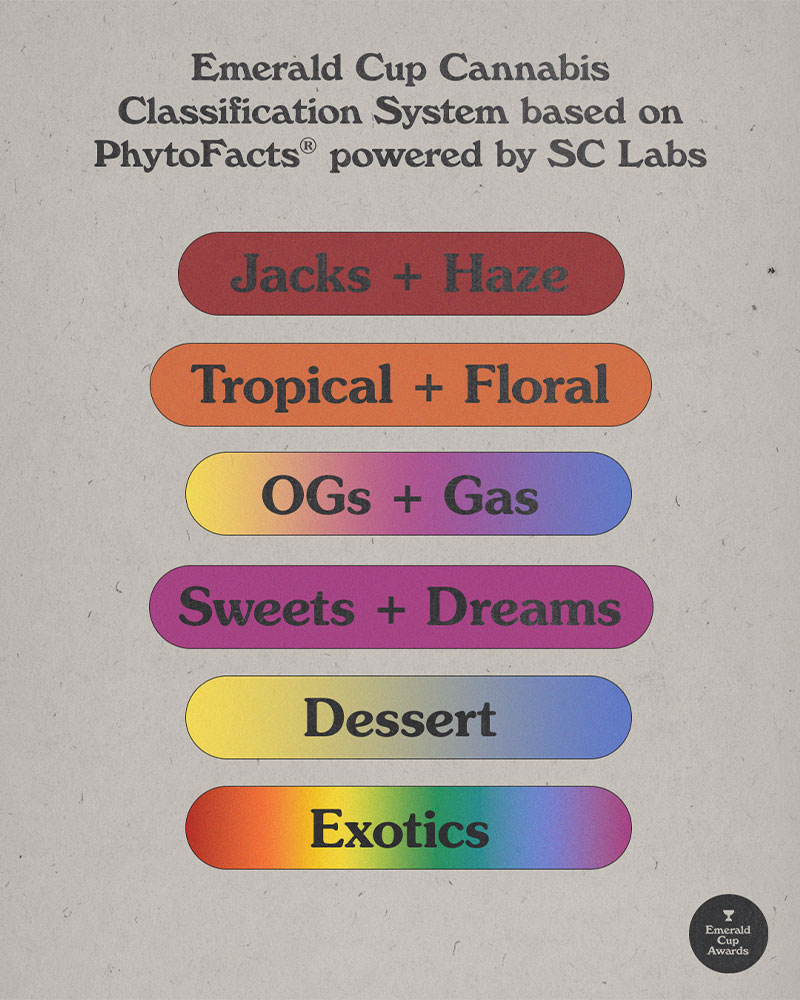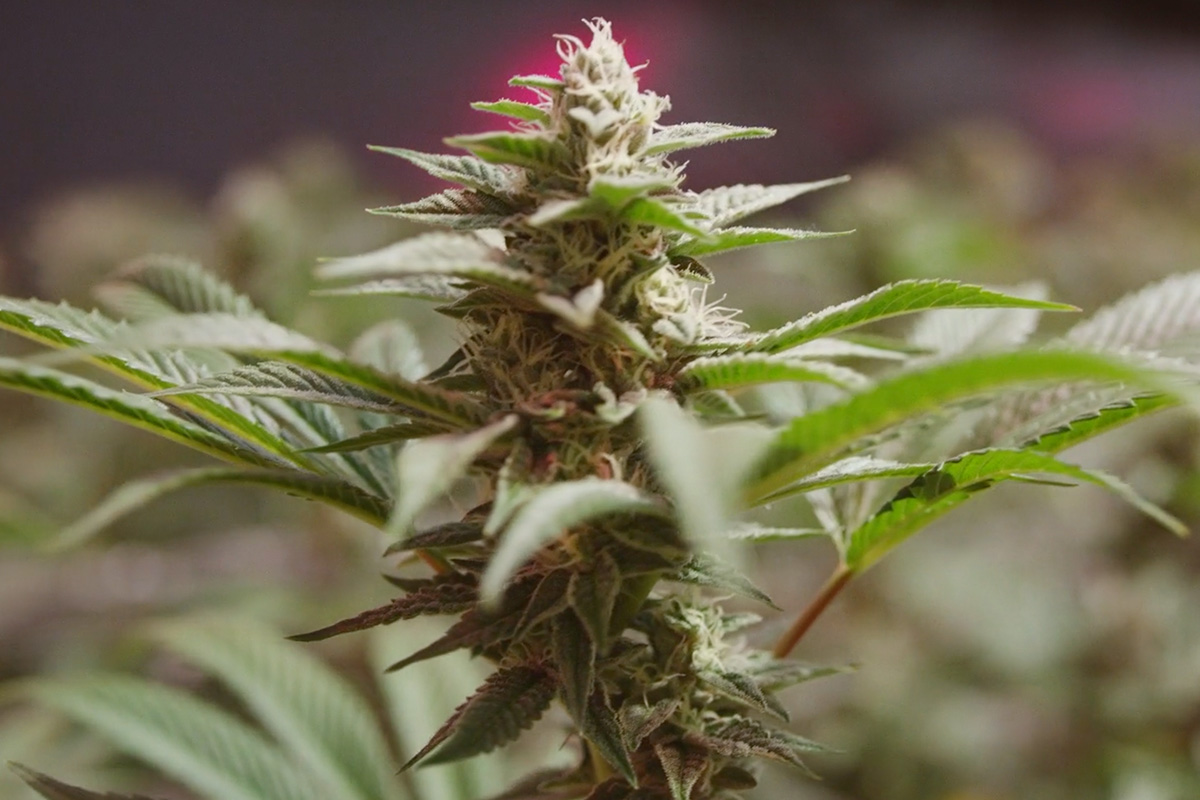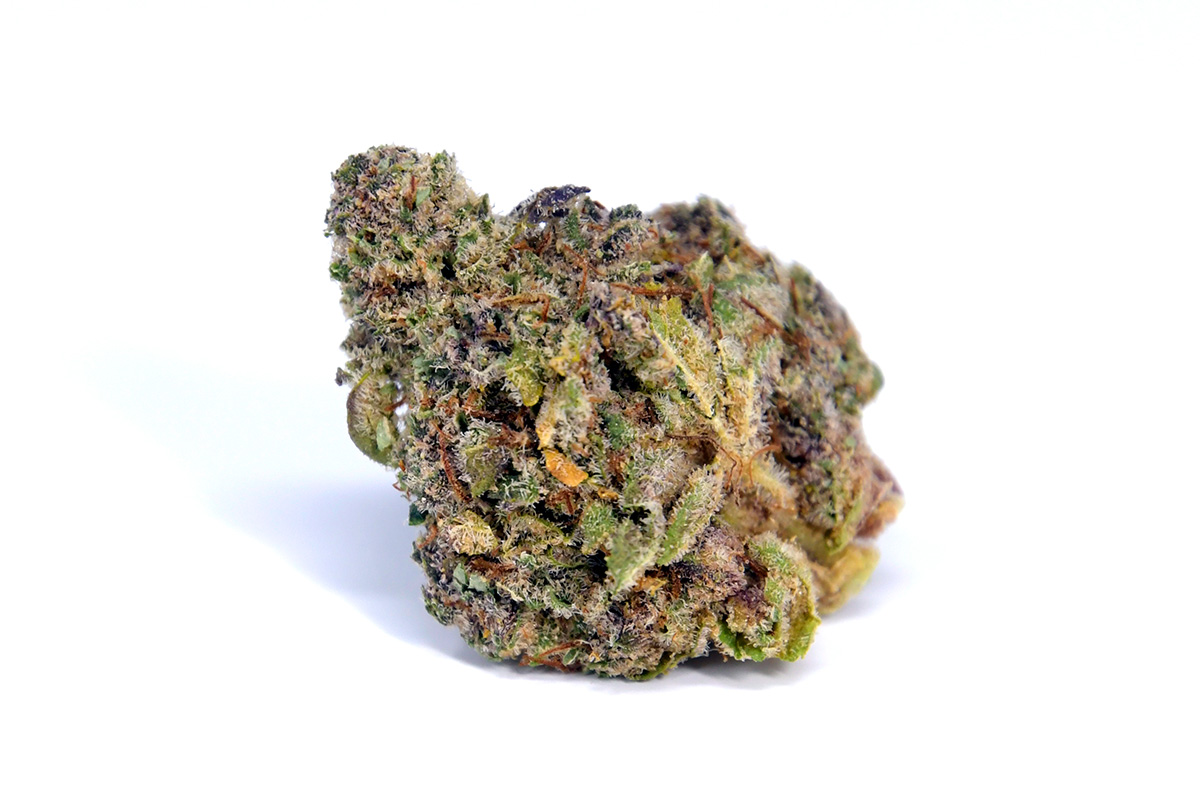Dusted with a glittering layer of golden trichomes, the Pink Lemonade strain is endowed with a mystical appearance that embodies everything curious, attractive, and intriguing about cannabis flowers. Tightly bound calyxes dazzle with a bouquet of pink, violet, and sage coloration.
Cracking open one of these flowers emits a comfortable herbal aroma. A burst of crispness teases the nose, somewhat akin to the tart fizz in a carbonated cherry drink. This dessert-like aroma nicely compliments a definite happy hour high. Calm, relaxed, and downright chill, Pink Lemonade is a true afternoon delight.
The Pink Lemonade High
Put on some chill beats and pour yourself a nice drink. This plant is smooth, easy, and well-rounded. If inhaling Pink Lemonade feels like the first meaningful breath you’ve taken all day, you might be pleasantly surprised as a subtle relaxation works its way along the limbs and through the muscles.
There’s no doubt about it–this plant is a go-to strain for mellowing out. While often described as thoughtful and creative, the herb is better suited to leisure activities than it is serious concentration.
While solo consumers may enjoy putting on some Netflix after a little of this plant, it’s peaceful and contented nature is ideal for social gatherings. Spending time with friends may always be fun, but it’s easy to sit back enjoy a pleasant conversation after a few tastes of Pink Lemonade.
It’s worth mentioning, however, that cannabis affects everyone differently. The herb tends to be a mood enhancer rather than an instant remedy for happiness. If you are in an easygoing and relaxed environment, expect even more mellow after enjoying a little bud. If you’ve been having a bad day, strains like Pink Lemonade may provide relief by softening negative emotions and making them more tolerable.
Pink Lemonade Strain Background
Today’s cannabis market is truly a craft one. To say that the lack of federal recognition of the herb is problematic is an understatement. However, one benefit of state-by-state legalization is the development of truly local, expertly crafted products.
Pink Lemonade is a superb example of such a flower. There are many renditions of Pink Lemonade out there, yet the particular version pictured is a cross between two contemporary hybrids, Lemon Cheesecake and Huckleberry Soda.
Each parent strain is exceptional in its own right. Lemon Cheesecake is a sativa-dominant flower with a sour cream aroma and substantial THC production. Huckleberry Soda is a craft hybrid from Annunkanki Genetics, an intriguing cross between two hybrids, Black Cherry Soda and Huckleberry Hound.
Pink Lemonade Strain Benefits
As a craft flower, Pink Lemonade was arguably bred more for enjoyment than serious medical potential. It’s frosted pink buds dazzle the beholder, showcasing the fact that this plant is truly a treat. However, this gorgeous flower isn’t all looks.
The flower produces upwards of 25 percent THC. This means that the plant may be useful to those who benefit from high-THC therapies. Those interested in making a full-extract oil, hash, or other forms of concentrates may also enjoy experimenting with this sugary herb.
This plant is not too energizing nor is it overly sedative. However, those hoping for a little extra help falling asleep at night may find the flower helpful. The relaxed flower may also be beneficial for anxious individuals in search of a social lubricant.
However, the high-THC content in Pink Lemonade can inspire the opposite effect in some people. Bottom line: if you are prone to social anxiety or often respond poorly to THC, this potent flower is likely not the best choice.
